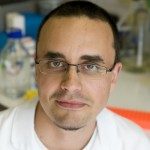Link to Pubmed [PMID] – 10779749
J. Immunol. 2000 May;164(9):4493-9
Although the two-signal model for T cell activation states that a signal-1 through the TCR and a costimulatory signal-2 are required for optimal stimulation, it is now clear that the requirement for costimulation can be bypassed under certain conditions. We previously reported that this is the case for naive CD8+ T cells in vitro. In the present study we tested the effect of signal-2 when delivered after signal-1 has been disrupted. Naive CD8+ T cells from TCR transgenic mice were stimulated in vitro by using immobilized recombinant single-chain MHC molecules alone as signal-1. This signal was then stopped after different lengths of time, and anti-CD28 mAb as signal-2 was given either immediately or after a time lag. We found that signal-2 can potentiate a short signal-1 when added sequentially. Moreover, a time lag between the two signals does not abolish this potentiation. If the strength of signal-1, but not its duration, is increased, then the time lag between the delivery of signals 1 and 2 can be lengthen without loss of potentiation. Together, our results indicate that the two signals do not need to be delivered concomitantly to get optimal T cell activation. We suggest that the CD8+ T cells can reach a transient “excited” state after being stimulated with signal-1 alone, characterized by the cell’s ability to respond to separate and delayed signal-2.
